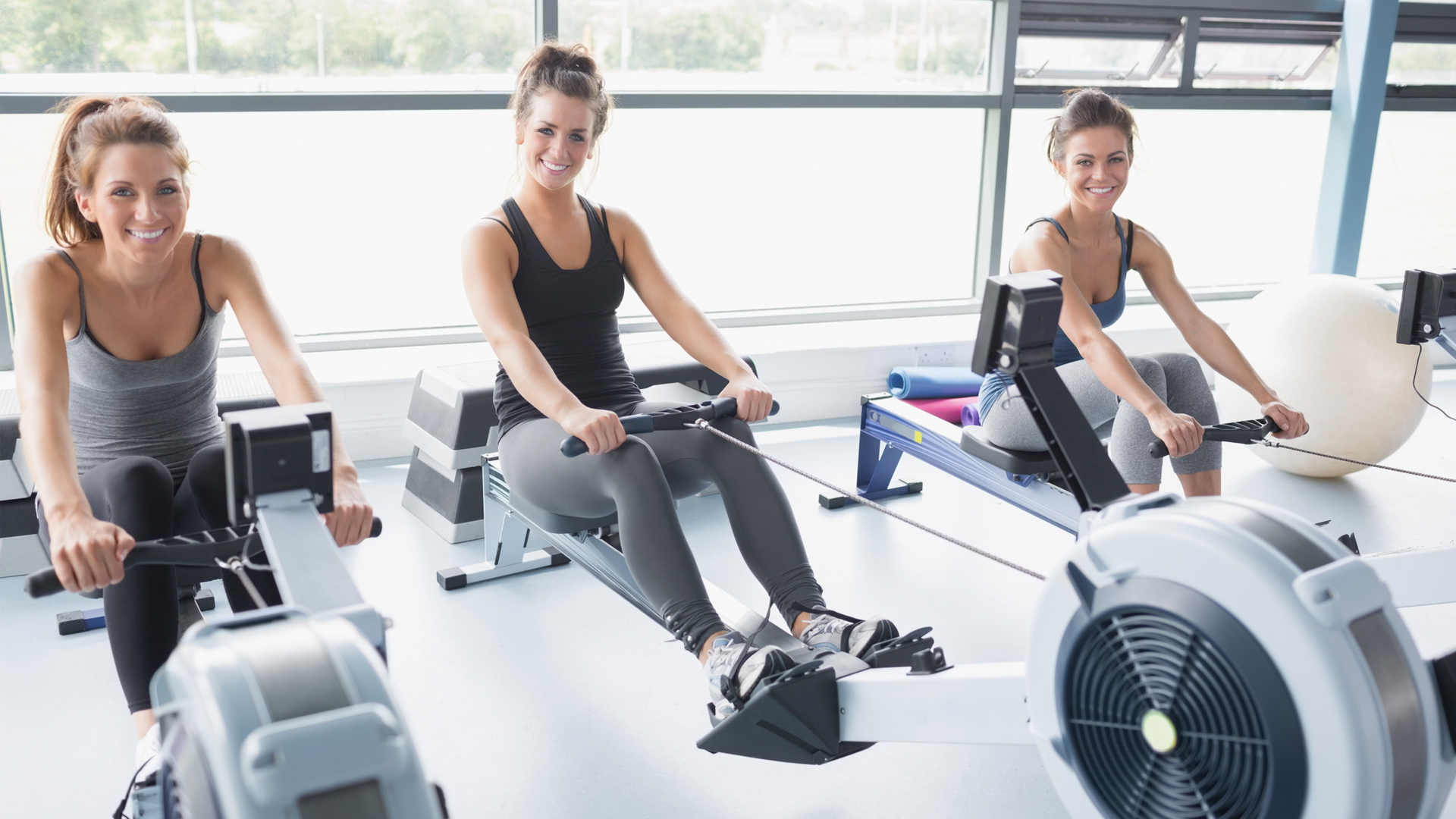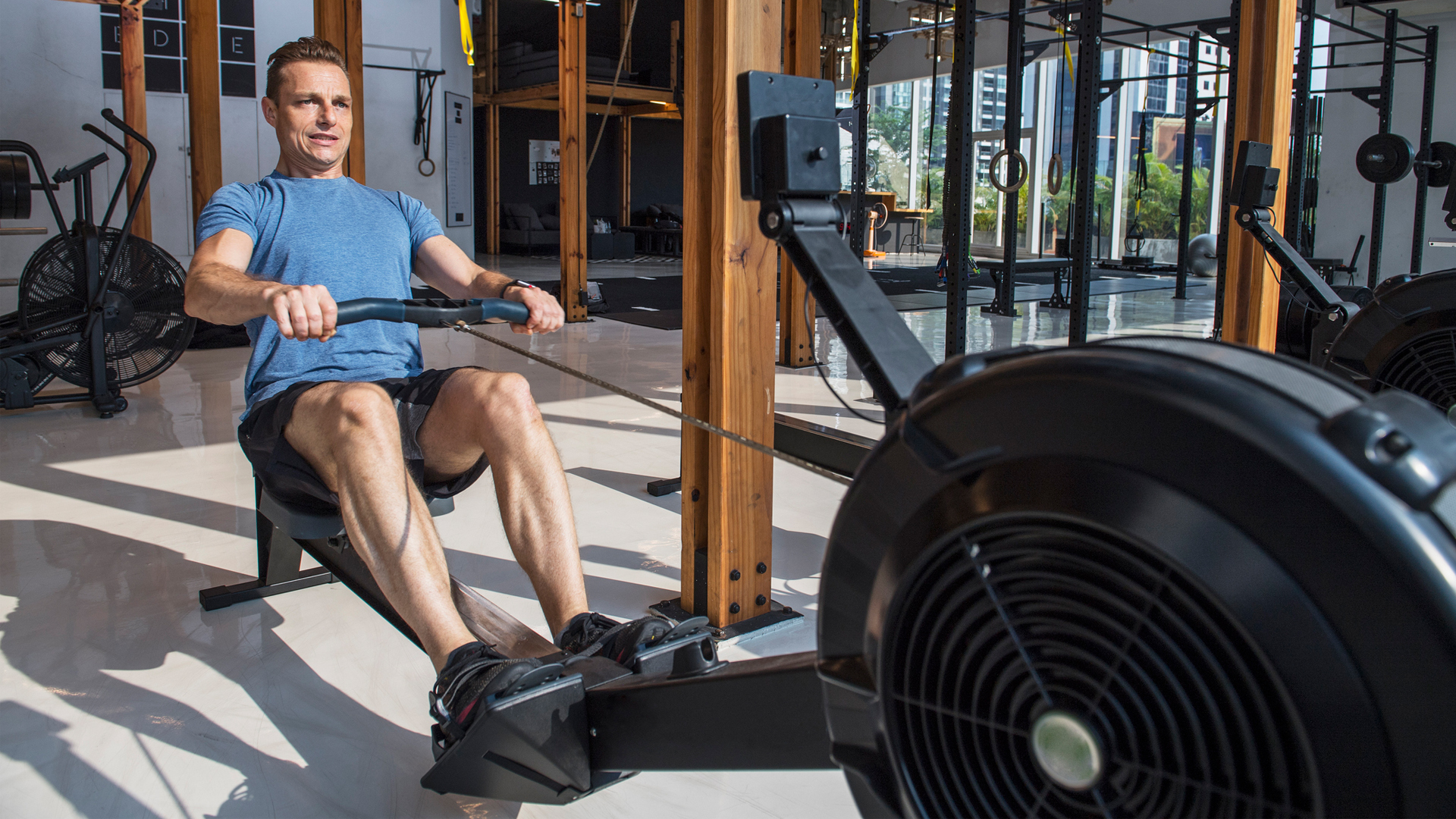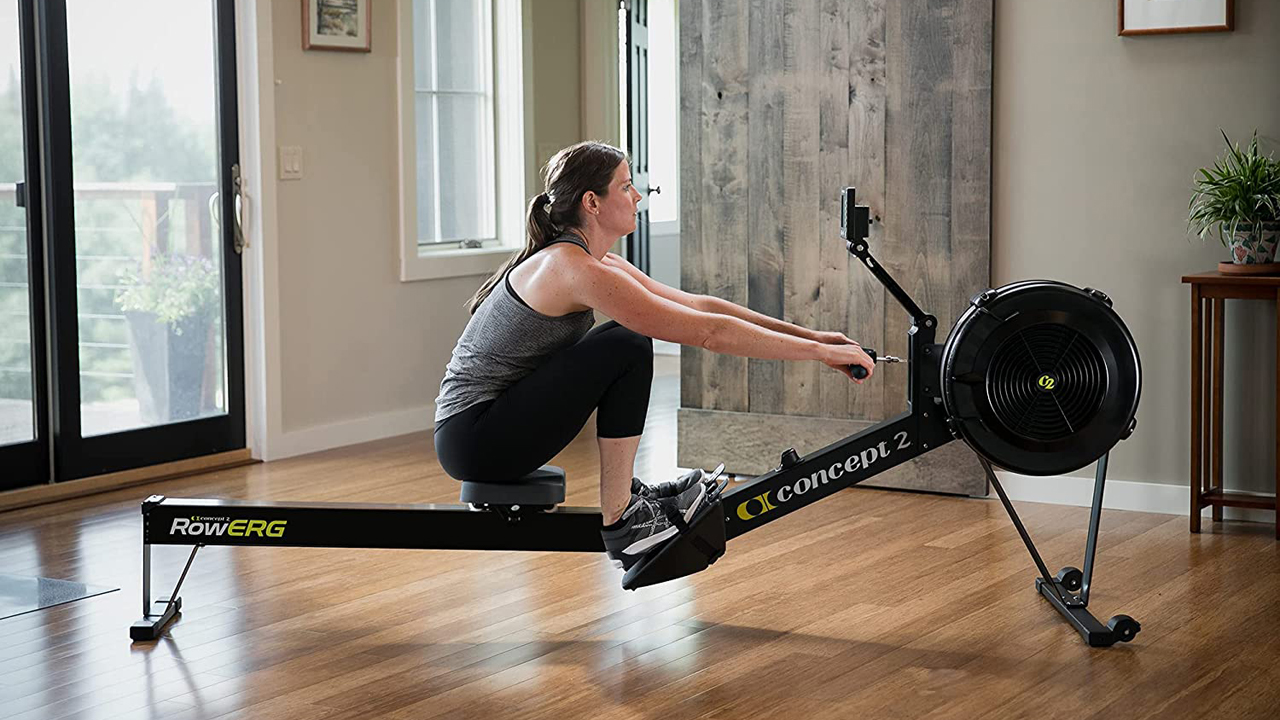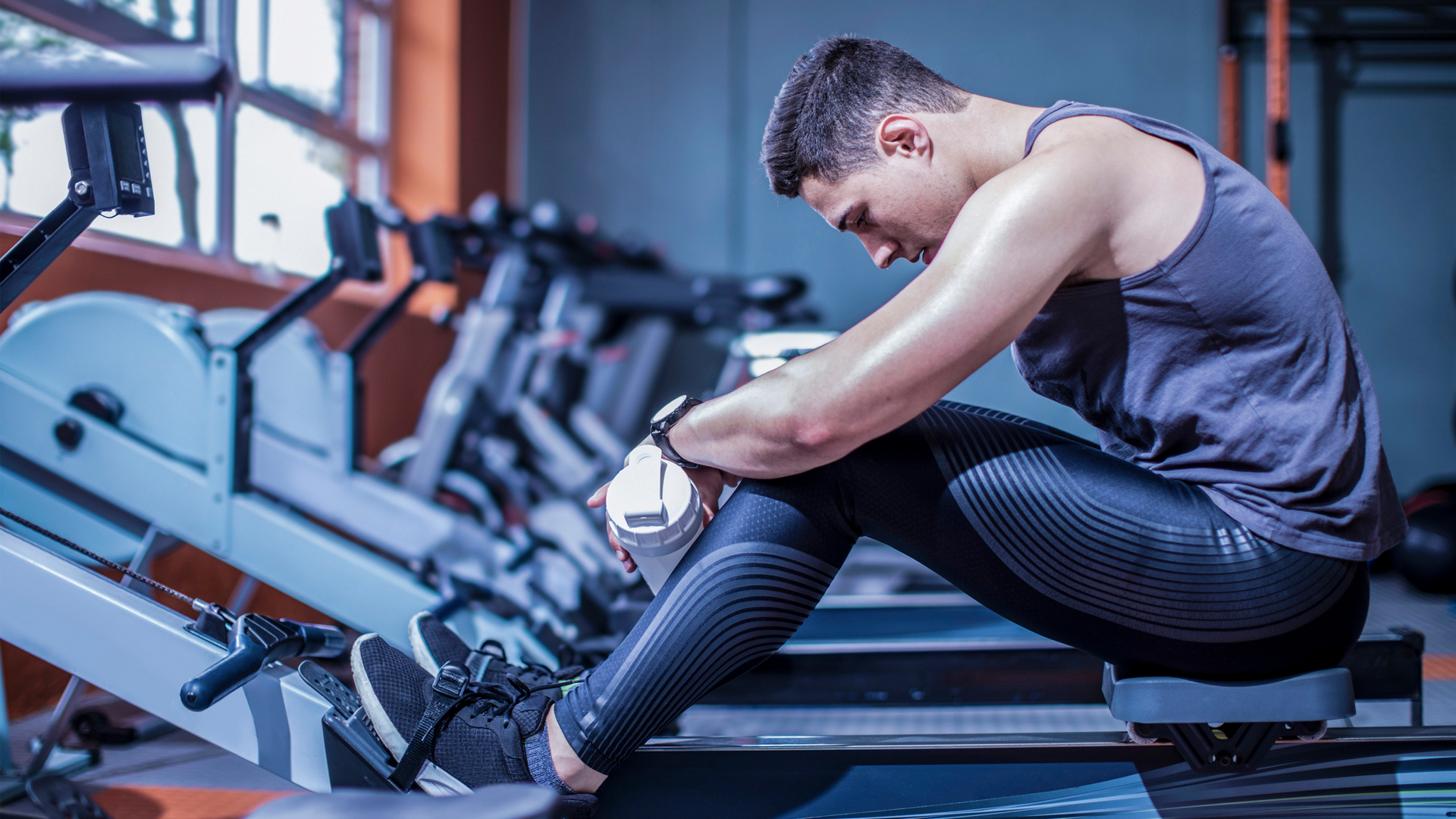How to use a rowing machine properly
Everything you need to know about how to use a rowing machine

- Why should I use a rowing machine?
- Why it's important to learn correct form
- How easy is it?
- How to set up your rowing machine
- What’s the correct technique?
- What are the most common mistakes?
- Is a rowing machine a cardio workout?
- Which muscles does a rowing machine work?
- Don’t forget to stretch
- Take care of your rowing machine
Learning how to use a rowing machine is one of the best things anyone interested in fitness can do. These machines can recruit over 80% of your muscles during a session, so they'll give you a solid workout – plus they're low-impact, so you won't feel it on your joints. The best rowing machines can also track your all-important metrics, like your splits, heart rate and burned calories.
There are loads of reasons to choose a rowing machine over something like one of the best treadmills or best exercise bikes (although those machines have their benefits too.) But it's important to know how to use one properly. In this article, we'll explore the benefits of using a rowing machine, how to set it up and how to use one correctly to best achieve your fitness goals.
Why should I use a rowing machine?
There are lots of things that make a rowing machine a good workout. It's low-impact, so it puts less stress on your joints. It's also often overlooked by other gym-goers, so you’ll usually be able to find one that's available.
If you're comparing rowing machines vs treadmills, then you'll find that the former are much better at recruiting different muscles – rowers work your arms, legs, core and back muscles. A session on the treadmill might result in a higher energy expenditure, but it won't work your entire body.
The only drawbacks of a rower is that it's expensive (a good machine can cost upwards of $2,500) and takes up a lot of floor space.
- Related: Rowing machines muscles worked
Why it's important to learn correct form
Learning how to use a rowing machine is essential for avoiding injury. According to an article in The Physician and Sportsmedicine journal, many common rowing injuries, such as low back and knee pain, rib stress fractures, nerve impingement and blisters can be attributed to training errors or equipment problems, so it’s important to master the basics of equipment set-up and technique.
How easy is it?
The good news is that it’s pretty easy to learn the nuts and bolts of rowing technique.
According to Sarah Fuhrmann, certified rowing instructor and owner of UCanRow2, a rowing training and certification company, "The basics of the rowing movement are very straightforward. The basics are easy, you’ll spend the rest of your life getting the finer points down, as all rowers do. It’s part of the fun!"

How to set up your rowing machine correctly
The first step in learning how to use a rowing machine is getting the setup right. If you don’t have it set up correctly it’ll affect your posture and technique, so spend a minute before you begin rowing to make any adjustments you need.
Make sure the seat is moving smoothly on the monorail. Give it a wipe with a clean cloth if it feels grainy or bumpy. Check the performance monitor or screen is at eye level and adjust the footplate (if you can) so the strap is across the widest part of your foot. If your machine has an adjustable damper, choose a low-to-medium setting. If it goes from 1 to 10, set it between 3 and 5.
What’s the correct rowing machine technique?
The first thing you need to master is the correct body position. "Some of the most common mistakes we see happen before people even take a single stroke," says Fuhrmann, "and they’re so easily corrected! Often people will plop themselves down on the seat without thinking about it, so they end up with their hips tucked under – not a position of power!"
Take a moment to get your body position right. "Literally pick your butt cheeks up and get your sit bones pointing down into the middle of the seat," advises Fuhrmann.

Once you’re sitting correctly, getting the sequencing of the stroke right is the key to how to use a rowing machine, according to Fuhrmann.
"The order of operations of the rowing stroke is pretty straightforward: Catch, drive, finish, recovery. We teach a mantra of legs-body-arms, arms-body-legs. We also like ‘Push-Pry-Pull, Reach-Rock-Roll’: PUSH (with the legs) - PRY (swing your torso back to about an 11:00 position on a clock) - PULL the handle into your sternum. On the back half of the stroke it’s REACH (the arms forward) - ROCK your hips over until your shoulders are in front of your hips and your torso is at the 1:00 position) and ROLL your seat forward by bending your knees)."
What are the most common mistakes?
One of the most common mistakes, according to Fuhrmann, is bending your knees too soon as you move towards the flywheel. You’ll know you’re doing this if you have to raise your hands to get them over your knees as you come forward.
"Getting your body rocking over is key," says Fuhrmann. "That reach-rock-roll metaphor works great here."
Is a rowing machine a cardio workout?
The beauty of the rowing machine is that it’s endlessly adaptable – you can use it for pretty much any kind of workout you like.
According to Fuhrmann, "Push hard like you're lifting a heavy barbell and it becomes more of a strength workout. Lighten up on the push and make it more aerobic and it becomes more cardio-focused."
In other words, it can be whatever you want it to be. Rowers are some of the best exercise machines to lose weight, if that's your fitness goal

Which muscles does a rowing machine work?
The simple answer is a lot! According to Fuhrmann, "Rowing targets 86% of your muscles on every stroke – quads, calves, hamstrings, glutes, back, arms and core. About the only major muscles that aren't used, and that we then typically try to work off the machine, are the muscles of the chest."
Don’t forget to stretch
After you’ve finished your workout you should finish up with some stretches. According to a study published in the Journal of Athletic Training, stretching after exercise will help reduce muscle soreness in the 72 hours after working out.
You’ll want to target all of the muscles that you’ve used (see above). Try the 10 stretches to do every day, which cover all the muscles used on the rowing machine.
Take care of your rowing machine
Whether you’re rowing at the gym or at home, an important part of how to use a rowing machine is leaving it as you found it. Wipe the monorail, the handle and the seat with a cloth or non-abrasive scouring pad (if you share the machine with others, use disinfectant spray or wipes on the handles and seat). You can wipe the performance monitor gently using a little rubbing alcohol on a soft cloth but never spray anything directly on the monitor or soak it
Sign up for the Live Science daily newsletter now
Get the world’s most fascinating discoveries delivered straight to your inbox.
Patricia Carswell is a freelance journalist specializing in health and fitness. She has written for a huge variety of national newspapers, magazines and websites, including Healthy, Top Santé, Women's Fitness and fitandwell.com, and writes a monthly column for British Rowing's content hub. She's the founder and host of rowing blog and podcast, Girl on the River, where guests have included Sir Matthew Pinsent and multiple Olympian Frances Houghton MBE. She keeps fit by rowing, walking, and wild swimming, and is at her happiest when on or in the water.











